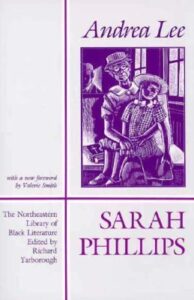Five Short Story Collections To Have You Reading Like a Writer
Aaliyah Bilal Recommends Edward P. Jones, Jamaica Kincaid, and More
It was in 2007 that I began to teach myself how to write. I had just completed a master’s degree at the University of London and was overwhelmed with the certainty that life in the social sciences was not the life for me. The same night I submitted my dissertation, I wrote my first short story. I don’t remember the name of it, it probably wasn’t very good, but there was enough on the page to make me linger over what I’d written—the beginning of a dawning conviction that my place in the world of ideas was in the realm of creative writing.
A few days later I left London for Cairo to spend a few months with my mother and during that time I got to work. Very quickly I realized that I would never be able to write competent fiction until I reformulated my relationship to the written word.
Until then, whenever I read novels and short stories I fell immediately under the spell of the writers to the point that I saw them as demigods. It was important for me to take the next step and evolve from devotee to apprentice. The first thing I needed was to teach myself how to read like a writer—to spend enough time with the work so that I could see the slight of hand clearly enough to recreate the illusion myself.
*

Lost in the City by Edward P. Jones
Lost in the City is the first full-length book of fiction published by Edward P. Jones. The 14 stories in this collection center the lives of ordinary African-Americans living in Washington DC during the mid-twentieth century. In the title story, a successful career woman confronts just heard news of her mother’s death. In the story “A Butterfly on F Street,” an older woman is approached on the sidewalk by her deceased husband’s former mistress. In “Marie,” an elderly black woman, frustrated by an unmannerly bureaucrat of the DC government, stands up for herself in a surprising way. These people and events, in the hands of a lesser writer, would seem quotidian and uninteresting, though Edward P. Jones gets into the marrow of these characters, elevating their lives to something truly grand.

At the Bottom of the River by Jamaica Kincaid
At the Bottom of the River is a brief collection of 10 stories, only 82 pages long. Despite the length, the stories are profound with meaning and beauty, warranting multiple reads. Each story offers a recounting of girlhood in the Caribbean. It is a life of great hardships—some interpersonal (particularly between mother and daughter), some to do with the toil of the land, some entirely inside the mind of the narrator. In this book, I’m most drawn to the contrast of the narrators existentialist perspective against the weight of formality and custom that confines of her reality.

Maud Martha by Gwendolyn Brooks
Maud Martha is a novella by Gwendolyn Brooks about working-class black life in early 20th-century Chicago. The book is titled for the main character, a dark-skinned black girl trying to find her place in the world. Through a sequence of vignettes we watch her grow into adulthood, watching as she confronts the challenges of life—sibling rivalry, death of family, racism, marriage, her own mortality and war. There is a lightness to her pen that keeps the chapters from ever feeling overburdened by the serious challenges Maud Martha must face in the course of her young life.

The Prophet of Zongo Street by Mohammed Naseehu Ali
The Prophet of Zongo Street comprises ten short stories where the author employs aspects of traditional West African storytelling in the rendering of lives unfolding in the fictitious world of Zongo Street. In contrast to the many novels and story collections one reads about Islam in the Middle East and South Asia, this book shows us the distinct and beautiful ways that Islamic traditions are lived in this make-believe West African community. A favorite story, “A True Aryan,” shows a shift in location to New York City where a young black man enters a cab and has a long conversation about the burdens of history with an Armenian man. The stories are full of light and lessons, particularly for those interested in the folkways among West African Muslims.

Sarah Phillips by Andrea Lee
This is a book that some people refer to as a novella, though the structure of the individual chapters seem to me, at least, more in keeping with the conventions of the short story. This book provides a glimpse into the life of Sarah Phillips, a young woman from an upper middle-class black family outside of Philadelphia. The chapters show her in different environments as she confronts the unique advantages and disadvantages that stem from her growing up African-American and privileged.
In the stories we see her studying abroad where she indulges a fantasy of disconnection from her Black American roots. In “Matthew and Martha,” we watch as her mother passive aggressively confronts the young white woman that her son, Sarah’s brother Matthew, has brought to the family home for dinner. This is a book that offers rare insight into the contemplations of a young woman who endures the scars of racism, but from the perch of the Black establishment. It’s left for the reader to decide what so much material privilege amounts to in her life.
__________________________________

Temple Folk by Aaliyah Bilal is available from Simon & Schuster.




















